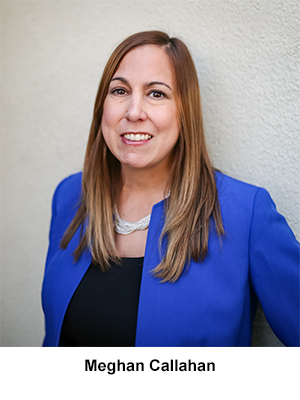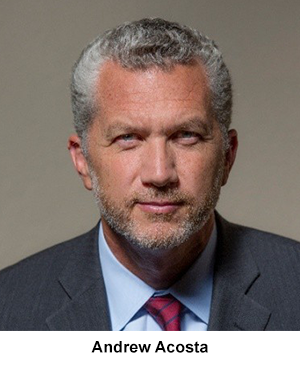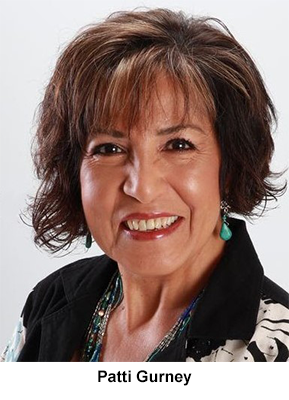By Dorsey Griffith
Contributing Writer

Passage of AB 890 in September was no accident, no legislative whim, nor a direct result of the COVID-19 pandemic. It was the product of a professionally orchestrated advocacy, public affairs, and media campaign that fought for more than two years on all fronts, against all odds, and won.
The bill’s success can be attributed to the nitty-gritty work of the California Association for Nurse Practitioners (CANP), its lobbying firm, public affairs and media consultants, bill sponsor Assembly member Jim Wood, years-long legislative relationship-building and grassroots efforts of nurse practitioners up and down the state.
Together they articulated a problem, illustrated a solution, built a coalition to amplify the message, and persuaded leading California news organizations to take a stand, which helped convince the legislature to pass the bill. And although advocates did not get everything they wanted, the outcome was a transformational victory.
“It was tectonic plate shifting,” said Kristy Wiese, CANP’s lobbyist and partner at Capitol Advocacy, who has represented the Association and NPs for over 10 years. “Even though we didn’t end up with as much as we had hoped for, it will be a very significant change.”

The victory concluded a nearly 10-year effort by CANP to pass legislation that would allow NPs to practice to the full extent of their training and expertise. SB 491 (Hernandez) passed the Senate but failed in the Assembly in 2013; SB 323 (Hernandez, Eggman) passed in the Senate but failed in the Assembly Committee on Business and Professions three years later. These herculean efforts, led by a dynamic and committed group of NPs, including former CANP presidents Surani Hayre-Kwan, Donna Emanuel, Beth Haney and Karen Bradley, built the foundation of CANP’s more broad-based and sophisticated advocacy apparatus.
Wiese had experienced the prior defeats, and while she understood the strategies required to win, she knew that to beat back opposition from powerful physician lobbies they would need to build a broader coalition. And because CANP largely lacked the resources to build that infrastructure, she worked with CANP Executive Director Rob Finley, his team, and the CANP Board of Directors to lay the groundwork for the Association’s first ever multi-faceted campaign to support AB 890.
The first step was to hire Meghan Callahan, who would bring 20 years of political public affairs experience to the effort. Callahan specializes in outside advocacy, which involves the identification and organization of supporters or opponents, development of materials and messaging, and tools to amplify them so that many voices can be heard talking about the issues.

“We spent a lot of time educating Callahan Public Affairs on the issue, the politics and the players,” said Wiese. “We gave them a list of organizations who had been supportive in the past. We combined that with organizations we wanted to be supportive.”
Callahan, who had never worked on scope of practice issues, said her firm’s first order of business was figuring out why an organization should care about NP practice independence.
“We had to explain the benefits of having nurse practitioners in the health care system,” she said, “and the fact that they will help improve access to care, and what that means to their various constituents.”
All told, more than 80 organizations agreed to back AB 890 to form the Close the Provider Gap coalition. They included labor unions like SEIU, hospital associations, mental health organizations, women’s health clinics, primary care groups—all organizations that understood why independent practice for nurse practitioners would get more people the care they need. They made sure that the coalition had representation from organizations working on issues important to every legislative district in California.

Callahan and her Director of Public Affairs, Madison Nagle, conducted regular meetings with coalition members to discuss strategy and tactics. They sent out weekly content that coalition members and their constituents could send out on their own social media channels. They drafted letters that CANP members could send to their Assembly representatives. They made phone calls to senators. Coalition members who had their own lobbyists joined the advocacy campaign and held their own district meetings with legislators.
Finley said CANP leveraged its social media platforms to specifically target lawmakers in their districts in ways they could not ignore. The promoted posts personified the movement’s leaders, coalition members, and other stakeholders who wanted to change minds and get the bill passed. The posts also boast about victories like media and other AB 890 endorsements.
“It’s important that everybody is singing from the same song sheet and talking regularly,” Callahan said. “What makes a successful coalition is making sure you are tightly coordinated and there is a clearinghouse and cruise director making sure people have what they need.”
All of this work strengthened the armor against aggressive opposition tactics from organizations like the powerful California Medical Association, which included intense lobbying of legislators in their districts and at the Capitol, media hit pieces and backroom work to convince bill supporters to switch sides.
The role of CANP chapter leaders and nurse practitioners throughout the state proved invaluable to the AB 890 effort, as well, as they stepped up to help illustrate their value to the health care system to a broad audience.
Nancy Trego, DNP, GNP and a long-time member of the CANP Health Policy and Practice Committee, lives and practices in Jim Wood’s Assembly district. She personally lobbied him, and in the process, they became friends. She also convinced fellow CANP members that “every day should be Lobby Day,” suggesting that by getting involved in local elections and good deeds, nurse practitioners could educate everyone about who they are and what they do. During the pandemic, for example, Trego and other NPs volunteered at food banks and served meals to needy families; they later helped staff shelters for wildfire evacuees.
“It was part of effort to show the community and the people who we were and that we cared,” she said.

Their efforts were aided by Andrew Acosta of Acosta Consulting, a political public relations firm in Sacramento, who started working with CANP in 2013, and was deeply involved in the prior scope of practice bills.
Acosta pitched media outlets with stories of people like Jennifer Ballard-Hernandez, DNP, AACC, FAHA, FAANP, in Huntington Beach. Ballard-Hernandez provides patient care for the Veterans Administration, where she is allowed to work independently because the VA Medical Center there doesn’t have enough doctors.
Other stories he pitched or provided to legislators described how entire communities, especially those in rural areas or areas with the most vulnerable populations, would lose their health care when physicians who employ nurse practitioners retire. Without a supervising physician, he explained, the nurse practitioner would lose the ability to serve those patients. Still other stories demonstrated how nurse practitioners could free up other providers to focus on their essential work, like first responders, by helping manage 911 calls and prevent unnecessary patient trips to emergency departments.
“This gave reporters a better understanding of how NPs work, and once we had AB 890 in motion, we could go back to the editorial boards and highlight new facts.” Acosta said.
For example, Acosta leveraged the Final Report of the California Future Workforce Coalition, published in February 2019 and drafted by a who’s who of leading health experts. The report detailed the health care provider shortage in California and recommended increasing the number of nurse practitioners and giving them greater practice authority. Jim Wood, the bill’s primary author, had been on the committee that drafted the report recommendations.
The report became a potent antidote to opponents’ arguments that NPs were pushing to replace physicians, Acosta said.
“There is no study that says this doesn’t work,” he said. “Every study says it’s cost efficient, it’s effective, and helps people get the primary care they need and are lacking. That is where it begins and ends.”
The COVID-19 pandemic, which has stretched the health care workforce and that in some states led to executive orders to allow nurse practitioners to work independently, made the argument even more persuasive.
News organizations, he said, saw it as a David and Goliath battle, and editorial boards for state and national papers, including the Los Angeles Times., USA Today, Sacramento Bee, Orange County Register and San Francisco Chronicle, supported the bill’s passage.
Ultimately, said Callahan, the broad coalition was able to overcome the challenging political environment and the bill’s opposition.
“At the end of the day, doctors care about patients, and we care about patients, and they have a philosophically different opinion about scope of practice,” she said. “What we were able to do is show that this wasn’t about doctors versus nurses. It was about access to care for patients.”
The bill passed with overwhelming majorities in favor; the vote was 53 to 1 in the Assembly and 77 to 3 in the Senate.

With just a day before the 30-day deadline for the governor to sign or veto the bill Newsom, who had been the first governor ever endorsed by the CANP, signed AB 890 into law. His action was consistent with his administration’s Healthy California for All Commission to improve health care access to health care for every Californian.
CANP president Patti Gurney said CANP members themselves deserve substantial credit for the success of AB 890, and their continued engagement will be critical to its implementation.
“Years of advocacy and relationship-building with legislators laid the groundwork for the passage of this bill,” she said. “Thank you to each one of you who has worked so hard for so long. We appreciate your ongoing commitment to enact smooth and rational implementation. It will require vigilance and effort on all our part to make sure this happens."